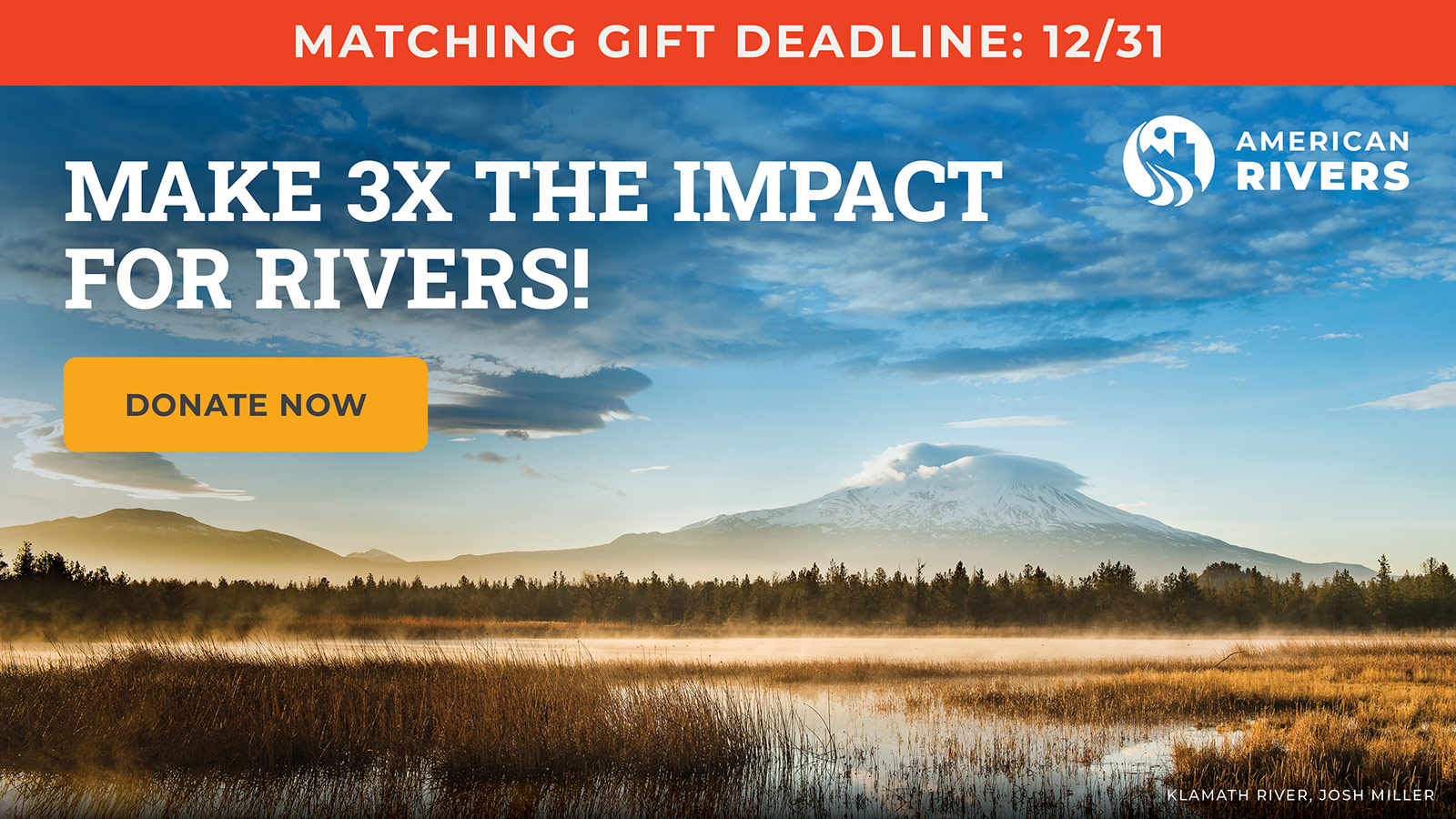Los Angeles River named among America’s Most Endangered Rivers of 2022
Concrete and climate change threaten river health, clean water, community access
Contact: Gary Belan, American Rivers, 202-243-7027
Bruce Reznik, Los Angeles Waterkeeper, 619-851-9997
Marissa Christiansen, Friends of the LA River, 323-223-0585
Washington, D.C. – American Rivers today named the Los Angeles (LA) River one of America’s Most Endangered Rivers® of 2022, highlighting the threat that poor river management, pollution and climate change pose to river health, clean water and communities.
The LA River is at a critical crossroads with two vastly different visions for its future— one vision prioritizes nature and connecting communities; the other seeks to control nature and divert water from the river, possibly rendering it dry and leading to increased climate risks. While major cities across the globe are freeing rivers from concrete channels and creating more equitable access to nature, LA County is pushing a new Master Plan that is overly reliant on concrete and other outdated approaches and denies communities natural climate solutions that could ameliorate extreme climate impacts.
“America’s Most Endangered Rivers is an urgent call to action,” said Gary Belan with American Rivers. “The LA River has been defined by concrete and cut off from communities for too long. It’s time to breathe life into a healthy, flowing LA River, for the benefit of all.”
American Rivers and its partners called on the LA Flood Control District to abandon plans that prioritize concrete and instead embrace a vision that prioritizes river health, equitable community access and climate resilience.
“This is a once in a generation opportunity to provide creative solutions to improve the river and the communities that surround it,” said Bruce Reznik, Executive Director of Los Angeles Waterkeeper. “The LA River is at a turning point, and the decisions we make today are critical. We can either pursue a path towards climate resilience through river restoration, or we can doom the river to a future as a polluted flood control channel. We must invest in nature-based solutions today— more concrete is not the answer!”
“The Los Angeles River is within walking distance to one million Angelenos, and yet we have just begun to address the vast opportunity to improve park access and ecological restoration on our urban waterway. We are living through a changing climate and must work with nature, not against it, to foster resilience in river-adjacent communities,” said Marissa Christiansen, President and CEO of Friends of the Los Angeles River. “The designation of the LA River as one of America’s Most Endangered Rivers is an acknowledgement that the stakes couldn’t be higher. We must seize this chance to create green spaces and utilize permeable surfaces so that the LA River is a public resource that can help us adapt to climate change.”
River-adjacent communities have long demanded ecological restoration, environmental remediation and access to nature. Current plans for the river do not meet these demands. A healthy LA River with trees and other riverside vegetation is critical for protecting biodiversity and achieving climate resiliency through urban cooling and carbon sequestration, promoting greater community health and equity.
The LA River flows 51 miles through 17 cities, including Burbank, Glendale, Compton, Long Beach and Los Angeles, from its headwaters in the San Fernando and San Gabriel Valley of California to the Pacific Ocean. The river was once a water source for the region’s Tribal Nations, including the Fernandeño Tataviam Band of Mission Indians, Gabrielino-Tongva, Gabrielino-Kizh and Chumash tribes.
The annual America’s Most Endangered Rivers report is a list of rivers at a crossroads, where key decisions in the coming months will determine the rivers’ fates. Over the years, the report has helped spur many successes including the removal of outdated dams, the protection of rivers with Wild and Scenic designations, and the prevention of harmful development and pollution.
The Los Angeles River was previously highlighted on this list from 1993 through 1996. Also included on the list this year are the Lower Kern River and the Colorado River. Other rivers in California listed as most endangered in recent years include the McCloud River (2021), Bear River (2017) and San Joaquin River (2016).
American Rivers reviews nominations for America’s Most Endangered Rivers from local groups and individuals across the country, and selects rivers based on three criteria: 1) the river’s significance to people and wildlife, 2) the magnitude of the threat to the river and communities, especially in light of climate change and environmental justice, 3) a decision in the next 12 months that the public can influence.
America’s Most Endangered Rivers® of 2022
#1 Colorado River
State: CO, UT, AZ, NV, CA, WY, NM, Mexico
Threat: Climate change, outdated water management
#2 Snake River
State: ID, WA, OR
Threat: Four federal dams
#3 Mobile River
State: AL
Threat: Coal ash contamination
#4 Maine’s Atlantic Salmon Rivers
State: ME
Threat: Dams
#5 Coosa River
State: TN, GA, AL
Threat: Agricultural pollution
#6 Mississippi River
State: MN, WI, IL, IA, MO, KY, TN, AR, MS, LA
Threat: Pollution, habitat loss
#7 Lower Kern River
State: CA
Threat: Excessive water withdrawals
#8 San Pedro River
State: AZ
Threat: Excessive water pumping; loss of Clean Water Act protections
#9 Los Angeles River
State: CA
Threat: Development, pollution
#10 Tar Creek
State: OK
Threat: Pollution
ABOUT AMERICAN RIVERS
American Rivers believes a future of clean water and healthy rivers for everyone, everywhere is essential. Since 1973, we have protected wild rivers, restored damaged rivers and conserved clean water for people and nature. With headquarters in Washington, D.C., and 300,000 supporters, members and volunteers across the country, we are the most trusted and influential river conservation organization in the United States, delivering solutions for a better future. Because life needs rivers. www.AmericanRivers.org


